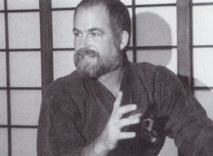
Attila S., Captain of Guards at Rikers Island Correctional Facility in New York City, walked into the prison mess hall. Four hundred inmates were sitting quietly, just like a coiled snake before the strike. There was none of the din and clatter of an average mealtime. The sharp taste of tin filled Atilla’s mouth – the flavor of fear. His senses lurched into full alert.
“Get out,” he commanded his subordinate guards. “This place is gonna blow.” At Rikers Island, you don’t second-guess your commanding officer. When the door slammed behind them, it seemed to echo one hundred times its normal sound.
The riot had begun.
Safe behind sealed doors, the prison warden locked eyes with Attila, who caught his questioning gaze like a pop fly. “Gut reaction,” he said softly, nodding his head. “Gut reaction,” the warden sighed. He lifted his arm and rang the alarm.
In a middle-class neighborhood in the inner city, Attila sits at his kitchen table amid barbells and weights. His two young daughters play in a nearby room. Squat and muscular, his soft face is framed by a dark sculpted beard, his raspy voice, filed down by years of talking to inmates. “The situation in the jail,” he explains, was that the inmates were not getting to see their doctors and lawyers. “These are very big jails, and they grow into monstrosities.”
After the eruption, Attila went back into the mess hall. His strategy was to disarm the inmates by talking to them, not in the confrontational, aggressive tone which they expected, but rather to speak softly and to listen. This was neither an arbitrary nor self-styled tactic. Attila is trained as a ninja.
Ninjas have filtered onto the Western landscape since the l970’s, mostly through grade B movies and action adventure thrillers. The wildly successful popularity of the Teenage Mutant Ninja Turtles and “Cowabunga Dude” have introduced masked, black-clad Japanese assassins into living rooms across North America. But traditional ninja have roots that go back 2,300 years to ancient China. Military men were then called kan. The Chinese classic, The Book of Strategy refers to the use of Kan as one of the most important aspects of a well-planned army. Kan literally means “gap,” such as the gap between “two sliding screens through which ventilation takes place.” It is through this thin space that ninja, masters of stealth and disguise, glide in. In Japanese, they are referred to as shinobi. Shi means intention or will, no means an expert or talent, and bi translates as information; thus shinobi can be considered the union of intuition, talent, and knowledge.
Attila has trained both as a martial artist and as a tantric Buddhist in the Tendai Mikkyo sect of Japan. His teacher is Stephen K. Hayes, an American who brought ninjutsu, the art of the ninja, to America in the late seventies, basing his Nine Gates Institute in Germantown, Ohio. Hayes is also an ordained Tendai Mikkyo Buddhist priest. Explaining his response to the riot at Rikers Island, Attila says, “I can pretty much feel what the other person is trying to do – basically through his words or body movement. It comes through the Mikkyo practice.”
Mikkyo is an esoteric form of Japanese Buddhism, which Stephen Hayes refers to as “mind science.” In addition to the formal sitting meditation associated with Zen, it contains tantric practices which, historically, have been associated with the Shingon and Tendai schools. In tantric practice, all direct experience is considered material for spiritual transformation; specifically, the energy of desire, the root of all suffering, is considered a supreme vehicle for the path of enlightenment. Hayes is a Mikkyo Tendai priest, balancing both physical and spiritual aspects in his approach.
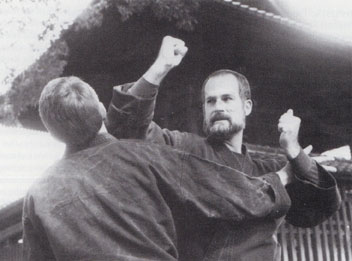
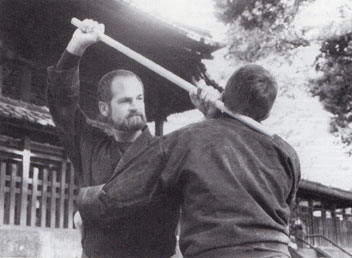
When Attila began training with Hayes, he already had a black belt in karate and was familiar with “kicking butt and taking no names.” But that, he concluded, was “useless” in his work. “It just was not going to work. The situation inside prison was already too aggressive.”
Hayes’ dojo, or training hall, is actually a shrine where men and women confront the fear and stress of everyday life – their own and others’. Here they become sensitized to the mental attitudes associated with specific kamae, or body postures. These are based on the five Buddha families of tantric Buddhism, in which different manifestations of the Buddha – or of enlightened mind – represent various qualities: space, action, passion, intellect, and equanimity. In ninjutsu they are ku (void), Fu (wind), Ka (fire), Sui (water), and Chi (earth). Over and over again during intense training, these five kamae are used for transformation.
A tall, affable, bearded man with a gentle manner and forearms the size of ham hocks, Stephen Hays looks like he could absorb the cold fury of hell and only be shaken slightly off balance. When he received the prestigious Black Belt of the Year award from Black Belt magazine, he joined company with Chuck Norris and Bruce Lee. Hayes’ preceptor, Grand Master Masaaki Hatsumi from Japan, granted him full teaching authority in the ninja tradition, calling him Shidoshi (Teacher of the Warrior Ways of Enlightenment). In addition to his school in Ohio, Hayes runs affiliated centers throughout the country and has written extensively on the ninja.
While some schools of Asian Buddhism have historically been associated with physical exercise, the spread of Buddhism into the European-American mainstream has largely circumvented the martial arts, a situation that has left many otherwise well-educated followers both ignorant and wary of Buddhist traditions that challenge their own ideas of what it means to travel the path of compassion. In response to some of the apparent contradictions between martial arts practices and Buddhism, Hayes says, “Because this is Vajrayana, or highest Buddhist teachings, there is no contradiction. What we are studying in the physical action is not violence. It is how we put up with, how we survive violence. The nin of ninja means ‘to put up with’ or ‘to endure.’ The upper part of the Chinese character for nin means ‘blade.’ The lower part means ‘heart,’ implying a blade held over the heart. Ja means person. What ninja means then, in a poetic way, is that even if you hold a blade over my heart, I will persevere, I will survive, I will get through. This is a crazy world. And not just because we just think it is. So what I am about is preparing people to deal with that kind of reality so that it doesn’t shatter their potential for spirituality.”
Hayes’ ninja training challenges conventional Buddhist notions about the nature of aggression and violence. It is one thing to watch the nature of your mind when it is experiencing aggression. How you react when you are being robbed, mugged, or worse, is another thing. He says, “It’s a taboo to Buddhists who have never confronted their own sense of inner violence or competitiveness. So they fear it greatly within themselves. Some of the most violent rhetoric I ever read came in the pages of a Buddhist peace publication in which people were talking about the military, or about people who have corporations or whatever; violent rhetoric about who these people are. There is a parallel with the extreme anti-sexual bias of the fundamentalist right. It stems back to this fear of the power of sexuality. It is the same for many American Buddhists with this violence issue. An extreme fear of a person’s inner potential for violent, non-harmonious, non-appearing-to-be-compassionate behavior.”
This denial has a corollary in the martial arts world as well, where, according to Hays, “People are afraid of their own gentleness, so they run these imitations of brutal macho toughness. Inside they are afraid that maybe they really aren’t tough, and they don’t want to hear any kind of Buddhist hero-type language.”
A basic ninja martial arts class in midtown Manhattan includes African-American, Asian, white, and Hispanic women and men. They start each class lined up in neat rows in front of the Kamiza, or “seat of the spirit in the training hall shrine.” Kneeling, students clap their hands together and bow from the waist, touching their foreheads to the floor. The instructor of the day illustrates a training exercise, to be then imitated by the students. Men and women dressed in jet black gi’s aim for each other’s throats, for the little indentation between the Adam’s apple and the collarbone, sticking two fingers into the rim of the bone, pulling their opponents down, collapsing them onto the floor, as if they were accordions. They make it look easy. A timer beeps. The opponents bow from the waist to their partners, hands on flanks, Japanese style. They trade places and begin this mad dance again, the new attacker trying to find the spot on their uke, or training partner, where they could crush windpipes and rip collarbones out.
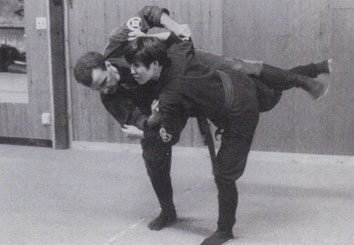
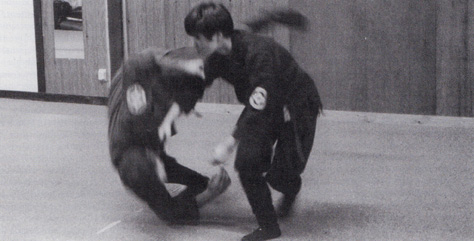
“It is very important that we address this misperception that we are dealing in violence,” Hays reiterates. “We’re giving people the opportunity to attain various degrees of fearlessness. To talk about it is not enough. You have to have the experience. We are not teaching people how to harm each other with knives. We are assisting them to overcome the human tendency to deny negative experience. What if you were mugged? Most people think, ‘Oh, don’t do this to me, don’t hurt me.’ But in the dojo the way to work with that would be ‘Oh, here comes the knife. I am not going to wish it away.
How can I relate with it so it does not harm my life?’ The idea of fearlessness does not mean bravado or recklessness. It means knowing your limitations, avoiding certain situations, and working with the situations that are inevitable.”
In order to bring dharma to a greater public, Hayes avoids Buddhist rhetoric. “The whole issue of skillful means,” claims Hayes, “is providing an appearance that will comfortably allow people to identify with the source from which they are going to get these teachings. For some people the source has to be a celibate, possessionless Asian man with a thin robe and a shaved head. For other people, a celibate, possessionless, shaved head man is going to be an excuse not to pay attention to the teachings. I am a very American person who lives a very engaged life who can demonstrate these teachings that are basic Buddhism. If a guy in a nice-looking car with a nice-looking family, in a nice-looking home—all that typical middle-American stuff—says ‘You know how I got all this stuff? I came to grips with who I am and what is really going on in life, and here is the method for doing that,’ it becomes believable. My position on the mandala is in the northern end, associated with the wind, with this character Fukujoju (Skt. Amoghasiddhi) which is the deity that symbolizes the wisdom of effective action: how to get things done in the most effective and efficient way.”
Charles H. waits behind the wheel of a battered car on a street in Spanish Harlem. A white guy, he slouches into his seat in order not to draw attention to himself while he supervises a team of narcotics agents assigned to a controlled drug buy of cocaine. His car radio plays hot-footed meringue while he calms himself down using the ninja “earthbreath.” He needs to stay calm. His men are in the apartment across the street, buying drugs. If anything goes wrong, it’s his call. Hidden from view is his protection: a bullet-proof vest and his Mikkyo training.
In an open loft apartment during midday, Charles appears the good neighbor, the one who would lend you his lawn mower. His pistol, in its tan, leather case, lies exposed on a glass table next to us. I ask, “If you had to take a life, would you envision yourself as a protector?” “Exactly,” he responds. “I am a protector of myself and of the public. That is what I do. I am a government agent. I took an oath. Unfortunately there are bad people in the world who want to hurt and kill. I have to prevent that. I do a lot of it just by arresting people. Then they’re not on the street to hurt somebody, and they’re not gathering more negative karma. As a Buddhist, I guess you could use the image of Fudo, the Japanese deity who stands for fearlessness in our Mikkyo training. He figures prominently in our Buddhist meditation. He is fixed, immovable, with a sword and a fierce face. In the Air Force, I was a law enforcement instructor. I taught Officer Survival. But until I learned ninjutsu I did not really realize what officer survival meant, and that law enforcement was far off the path of what they needed to do. You see it in this Rodney King thing, cops not being trained properly, and frustrated at not being able to control somebody, which is fairly easy to do.” He pauses, thinking this through. “I work with police departments, not the regular cops but the special response teams, the SWAT teams. I guard government people. These white militant supremacists who train in military tactics have guns and sell firearms to lunatics, to anyone who is going to threaten, assault, or kill a government agent. Some assignments are bribery cases with Chinese organized crime, Korean organized crime, the Mafia.”
Highest Buddhist tantra points to a reality beyond good and evil. I ask Charles, “If Mind is viewed only as emptiness and luminosity, then how can someone be evil?” Charles explains, “There is something that Stephen Hayes once said: Do not look at yourself as good or bad. As I arrested people and served search warrants, I began to think this way, and I found that I did not look at them as good or bad, did not have feelings of hate or anger toward them even if they tried to assault me. If I just looked at them as both, that they are the same, and that there is good and bad in everybody, if I did not judge them, it made it easier on me. I don’t have to judge them now, I don’t have to resent them or hate them. I can actually show compassion toward them. I am still going to arrest them, or whatever – that’s my job. But I don’t have to judge them. Even though they did something wrong, I don’t condemn them and send them to hell. They are still my brother or sister. Hopefully what I am doing is helping them get on the right path.”
The path for those engaged with Hayes’ training continues the “eighteen ways of the warrior,” a system that began in India, was conveyed to China, and in the ninth century arrived on the shores of Japan. Of these eighteen qualities, the texts give primacy to “spiritual refinement.” Other categories are “leaping, tumbling, landing, falling, different blocks, use of the sword, spear, halberd, sickle and chain, full staff, half staff, three-quarter staff techniques, blade throwing, archery from horseback, special disguises, concealed weapons, special medicines, strategies, and strategies of heaven and earth.”
Invisibility, stealth, and cunning were coupled with a disdain for aggressive force. The ninja strongly relied on subtlety. One ninja training manual says, “The essence of . . . the spirit of ninja [is those] who have the power to use patience together with the body, mind, and subconscious. It is this power that one must develop by training hard. The result will lead to the ability to pocket any insult and later throw it away without a trace of resentment.”
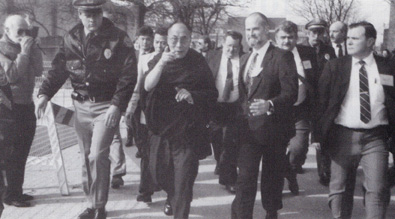
In Japan, the ninja were often born into the lower classes, but Samurai could become ninja after they were defeated in battle. Thus, they were not bound to the strict Samurai codes of honor. Training schools, or ryu, started as loose-knit family groups, and most ninja were raised from birth. Children were encouraged, starting at an impressionable age, to engage in games stressing agility and balance. Older children learned to kick hay bales and play adroitly with sticks. By early teenage years, real weapons were introduced, such as the five-pointed star blades called shuriken, as well as ropes and chains. They learned to walk silently over roof tiles, raised platforms, tatami mats, through dry underbrush, leaves, and shallow pools. A ninja was taught to walk through water “like a crane,” move through tight spots “like a sand crab,” and slink across planks or mats “like an octopus” – skills that made them useful as sMichele Martinecret spies and henchmen to the powerful Japanese shogunate.
Female ninja were classified as part of the kamae of sui (water) and were cultivated to manipulate energy through preying on increased feelings of emotional satisfaction; like the ocean, they would draw out, only to come back, like a wave at rip tide, in unexpected ways. These women, or kunoichi as they were called, were given special training in psychological skills and intuition. Taught to manipulate men high up in the enemy hierarchy, they were known to conceal blades inside musical instruments and sex toys. Shimma kunoichi, ninja family members, were trained as spies who were taught not to fall in love with their targets or lose sight of their ultimate goal after successful seduction. According to Rumiko Hayes, a ninja black belt and the wife of Stephen Hayes, head female agents were sent around the country to collect young female orphans, whom they raised with care. These orphan girls were forever indebted to their agents and would do whatever they were asked in terms of seducing men. Karima kunoichi were women who were not part of the clan but were temporarily hired as maids, mistresses, entertainers, fortune tellers, prostitutes, or artists. In contemporary times, female ninja often fulfill the same roles as men, working in security and law enforcement.
Michael T. runs one of the ninjutsu training dojos in the United States. Part of the year he hires himself out to an agency that supplies international diplomatic security agents. Tall and reed-thin, he has the look of an introverted scientist and, in fact, much of his job involves detailed preventative analysis in order to protect his clients. He also practices Tendai Mikkyo Buddhism. Inside his dojo office is a laptop computer, a phone with several incoming lines, martial arts books, and catalogs selling knives, guns, and paramilitary gear. There are also books on Buddhism and dream yoga practice. Michael says, “No doubt in my mind there isn’t a person off the street or an animal or anything on the planet that isn’t capable of ultimate violence. I think my training makes me more capable of non-violence than most folks I meet. I can let situations ride to a very extreme point, let things escalate very fast, because I know I can always control them if I need to. I stay calmer longer. I can talk to people and do all sorts of tricks to calm them down.”
I ask Michael how he applies this work in a crowd, how he can survey thousands of people and be successful. He touches the tips of all his fingers together in an arch against his mouth and forehead, shuts his eyes for a minute, and thinks. “Just achieving a calm mind in the middle of a crowd makes it easy for me to find the least calm minds, the violent minds. I’ve become more sensitive through practice, which puts me way ahead of the game. Now, instead of one thousand people to look at, I only have two people who are violently intentioned. I protect people. If folks are going to harm those people, I will stop it. A few times I have been sharper than some of the other people on my team because of these skills. Probably I would not have that capacity were it not for the Mikkyo aspect of ninjutsu.”
This ability comes from Michael’s kuji exercises. These are nine basic kuji which involve using different mantras(chants) and mudras (hand symbols). He explains, “There are exercises to stay centered, exercises for energy, exercises to gain insight, to anticipate dangers, and many exercises to hide from danger. I can call up extra energy when I need it, and become very fiery when I need to. There will be circumstances when I am working twelve or sixteen hours, and then a situation occurs. For example, some unwanted guest shows up on a floor that I am protecting. You have to summon quick energy; you have to be sharp, because that person is sharp.”
When Michael teaches seminars to law enforcement personnel, he uses these kuji in simple ways. “We will, for example, give them a nightstick. We call it a focus exercise. So instead of the mantra Kahm-Man we will say “calm mind.” Just remember “calm mind.” If you take the nightstick in your hand, and think “calm mind,” it has been known to work very well.”
Because it is such a rigorous martial art, many people who walk into the dojo are street kids who want more, not less power. Michael says, “I’m not teaching a street kid who is violent how to be more efficient at being violent. I teach him how to be less violent, how to retreat from the potential for violence. Very few people leave because we are not a tough enough martial art. People leave because we get them in touch with other parts of themselves.”
On an early Saturday morning, Stephen Hayes is at the dojo teaching an introductory Mikkyo class. People filter in and bow from the waist before they enter the room, their hands slack on their flanks. Discretely hung in different corners are carved Japanese spirit masks and some black ink calligraphies. The electronic beeper from the martial arts classes is replaced by the clanging, sweet timpani of two small Tibetan hand cymbals. Musky rust-colored sticks of incense are lit with tapered matches. Participants are not in black, but are now wearing white gi’s with white belts and white tabi socks. They sit cross-legged in rows, some holding Tibetan dorje scepters and brass bells. The atmosphere is serene and cloistered. There is no smell of martial arts sweat. A different shrine, off to the left, has been opened and a drawing is uncovered. It reveals a wrathful, somewhat feminine, multi-headed demoness on top of a hairy, wild boar and is flanked on either side by elaborate mandala paintings. This honzon contains the enlightened quality of energy, a kind of wrathful crazy wisdom. The participants begin chanting: Om Boji-Shitta Boda Hada Yami Om! Sammaya Sa To Ban (“We reach up to unite with highest truth! Awakening the enlightenment mind is my aspiration! We reach up to unite with highest truth! The vow merging heaven and earth forces is my embodied commitment.”).
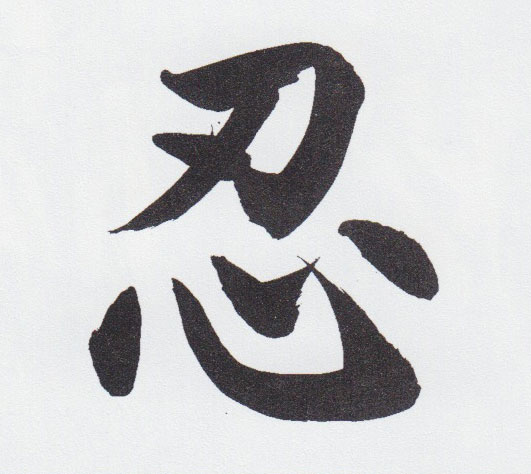
How many of Stephen Hayes’ students will awaken to enlightenment? “Up until now, the majority have come into ninja training from a martial arts approach,” he says. “There are a lot of people in the world now who could really use all of these teachings – martial arts as well as Buddhism – but if we come out in too straightforward a form they would think, ‘No, that is not what I want.’ So there’s a certain subtlety to introducing dharma concepts. There are people who are very happy with their Jewish or Christian faith. I’m comfortable with that because that’s the way I did it. It took me years.” Musing further, he puts a well-muscled hand to his curly bearded chin and says, “I look around at the modern Buddhist scene and there are going to be all different kinds of roads in and all different approaches.”
Thank you for subscribing to Tricycle! As a nonprofit, we depend on readers like you to keep Buddhist teachings and practices widely available.